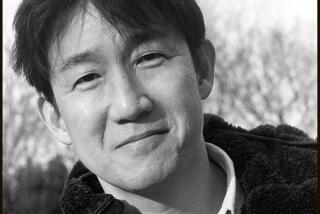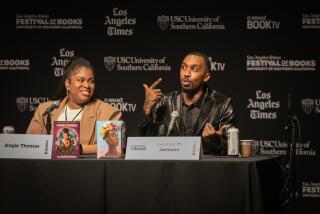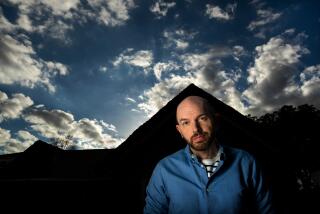Jeffrey Toobin, Patty Hearst, and the mad mad 1970s
“I had always assumed that the ’60s were the time that the country was really in crisis. But the ’70s were far worse,” Jeffrey Toobin said when we reached him mid-book tour, traveling by train. “There were a thousand bombings a year, skyjackings all the time, rampant crime on the streets of San Francisco, Watergate, the energy crisis. And the Hearst kidnapping was a defining movement of that crisis in the country.”
Toobin, a New Yorker staff writer, tells that story in his new book, “American Heiress: The Wild Saga of the Kidnapping, Crimes and Trial of Patty Hearst.”
In 1974, the kidnapping of newspaper heiress Patricia Hearst was big news. Her grandfather, William Randolph Hearst, had been a larger-than-life pioneer, architect of today’s tabloid journalism (and, famously, the inspiration for Orson Welles’ “Citizen Kane”). At the time she was taken, Patricia Hearst — Patty to her parents — was a rebellious middle daughter, a mildly depressed Berkeley student living with a fiancé nobody liked.
Her kidnappers were a tiny group calling itself the Symbionese Liberation Army, one example of “the madness of the ’70s,” Toobin said. The SLA spouted revolutionary rhetoric (its communiqués ended, “death to the fascist insect that preys upon the life of the people”) but could barely keep its members fed, much less change the world.
Imagine the world’s shock when, two months after her capture, Hearst announced her solidarity with her captors, and her new nom de guerre, Tania (a homage to one of Che Guevara’s comrades in arms). She would live with them, helping to carry out two bank robberies and participating in one intense L.A. shootout, until her arrest in September 1975. Photographed wearing a beret and brandishing a machine gun, Hearst became an instant icon.
Whereas Toobin’s previous books, including “The Run of His Life: The People V. O.J. Simpson,” expanded on cases and subjects he’d reported on in person, he was just 13 when Hearst’s kidnapping took place. “This book was the first I’ve written that is really at the border of journalism and history,” he explains. It was while researching an article on a jailhouse gang that Toobin began learning more about the 1970s prison movement, which led him to the SLA.
They saw themselves as part of a worldwide revolutionary movement....but they were a sort of tragicomic offshoot.
— Jeffrey Toobin on the SLA
“Nothing’s been written about it for decades,” Toobin said. “That was another reason to do it; I thought a story as big and dramatic as this one needed a new look after 40 years.”
Looking back at the Hearst kidnapping today, it’s startling how many of its key moments — the use of security camera footage in one of the banks the SLA robbed, the new technology that allowed television stations to stream breaking news live to viewers, the participants angling for book deals even before bullets stopped flying — feel like previews to our current media landscape.
“At one point I refer to the story as a trailer for modernity, a set of coming attractions,” Toobin said.
Immediately after kidnapping Hearst, the SLA demanded massive food donations throughout the state of California in lieu of a traditional ransom. It was a stance that “had had a big impact on Patty,” Toobin said. “She saw that they weren’t asking for money for themselves, they were trying to feed the poor, and they told her that her father was being recalcitrant — that was a big factor in her decision to switch sides.”
If the book has a moral center, it’s Randy Hearst, Patricia’s father. “Until Feb. 4, 1974, he lived for duck hunting and red wine,” Toobin said. After his daughter’s kidnapping, Randy tried to appease her captors by organizing an ambitious though bungled food donation program. “He really put this heart and soul into trying to free his daughter,” Toobin said, “and that included trying to understand the world that she had been swept into. And that was a tremendous act of love for her, and an act of empathy for a guy who had led an enormously sheltered existence.”
::
Wednesday: Jeffery Toobin at Writers Bloc with “American Crime Story’s” Scott Alexander and Larry Karaszewski.
Where: Writers Guild Theater, 135 S. Doheny Drive, Beverly Hills
When: 7:30 p.m. Aug. 17
Admission: $25
Info: www.writersblocpresents.com
::
Despite Hearst’s testimony during her trial that she had gone along with SLA actions only because of coercion or fear, Toobin rejects that explanation, but not without compassion. At the time of her kidnapping, he points out, “she was just 19 years old, an unformed, restless soul. She was trapped in an engagement to someone she didn’t want to marry, but also didn’t want to admit to her mother that she’d made a mistake. She was developing a political consciousness, and she was ready for an experience vastly different from anything she had known before.”
At the same time, he added, her choices had disastrous consequences that could have been even worse. “If you look at her conduct, to me there is no alternative explanation except that she was an enthusiastic participant in an extraordinary number of crimes, any of which could have taken multiple lives, and one bank robbery did take a woman’s life,” Toobin said. “I mean, shooting up a street in Inglewood — it’s just a miracle she didn’t kill a lot of people.”
At her 1976 trial, despite disavowing her SLA ties, Hearst was convicted for her role in a bank robbery. Initially sentenced to 35 years in prison, she served only 22 months before President Carter commuted her sentence to time served. President Clinton pardoned her on his final day in office. “Rarely have the benefits of wealth, power, and renown been as clear as they were in the aftermath of Patricia’s conviction,” Tobin writes.
In 1982, Hearst published “Every Secret Thing,” her memoir of the kidnapping. It was a bestseller. She has worked in Hollywood, memorably appearing in the John Waters films “Cry-Baby” and “Serial Mom.”
Despite Hearst’s undeniable radical chic as Tania, it’s difficult today to see the SLA as anything but absurd. The revolutionaries railed against racist, imperialist oppression, but their eight-member group included only one black member, Donald DeFreeze, who took the name Cinque (after the courageous leader of the Amistad rebels, but resembling him in no other way).
“They saw themselves as part of a worldwide revolutionary movement, which included the Tupamaru in Uruguay, the Red Brigades in Italy, the Baader-Meinhof Gang in Germany,” Toobin said. “There was something going around in the world that they were part of, but they were a sort of tragicomic offshoot. They were not serious revolutionaries.”
At the same time, Toobin added, “I also was conscious of the fact that as nutty as the SLA can appear to be, they also killed two people”: bank customer Myrna Opsahl and Marcus Foster, the African American Oakland school superintendent whose murder appalled the local Black Panthers. “We can be grateful that the SLA was so incompetent, because if they’d been effective, the death toll in this story would have been much, much higher. So this was serious business,” he said. “I tried to keep that ever present in my mind.”
Tuttle is a board member of the National Book Critics Circle and regular contributor to the Boston Globe; she is founding director of the Decatur Writers Studio.
::
“American Heiress: The Wild Saga of the Kidnapping, Crimes and Trial of Patty Hearst”
Jeffrey Toobin
Doubleday: 384 pp., $28.95
More to Read
Sign up for our Book Club newsletter
Get the latest news, events and more from the Los Angeles Times Book Club, and help us get L.A. reading and talking.
You may occasionally receive promotional content from the Los Angeles Times.







